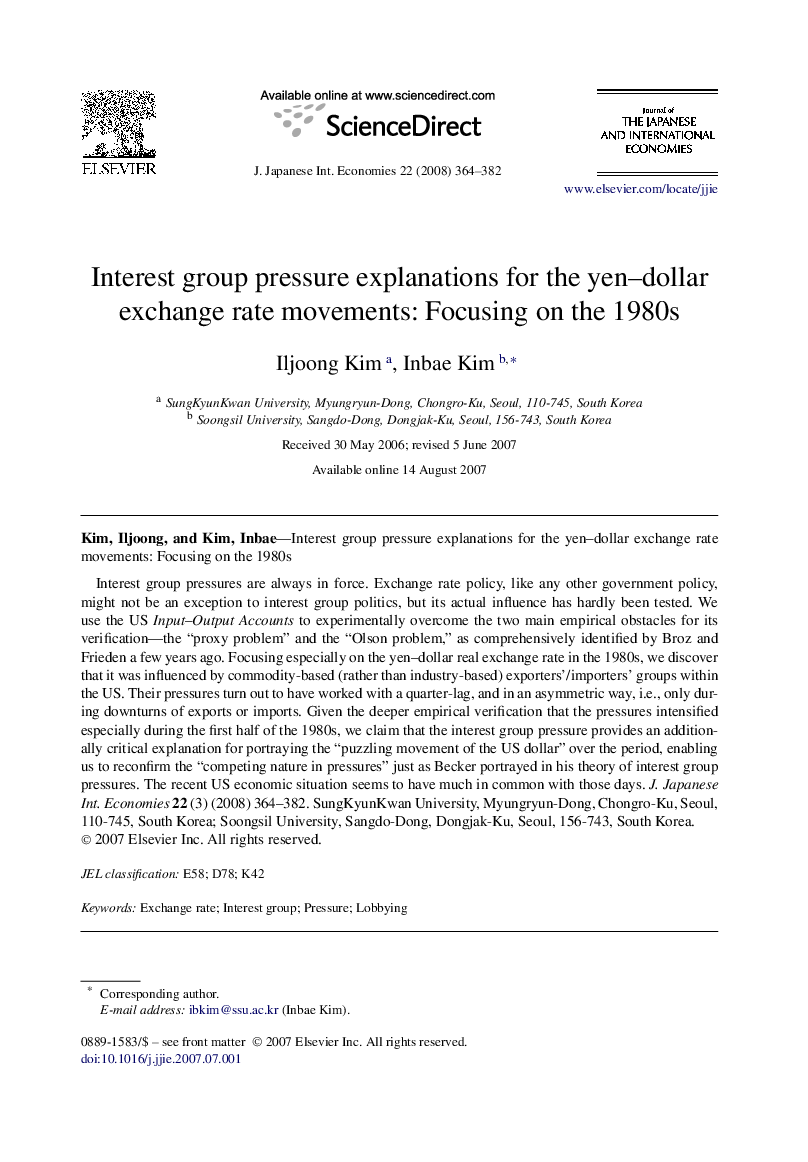| Article ID | Journal | Published Year | Pages | File Type |
|---|---|---|---|---|
| 965069 | Journal of the Japanese and International Economies | 2008 | 19 Pages |
Abstract
Interest group pressures are always in force. Exchange rate policy, like any other government policy, might not be an exception to interest group politics, but its actual influence has hardly been tested. We use the US Input-Output Accounts to experimentally overcome the two main empirical obstacles for its verification-the “proxy problem” and the “Olson problem,” as comprehensively identified by Broz and Frieden a few years ago. Focusing especially on the yen-dollar real exchange rate in the 1980s, we discover that it was influenced by commodity-based (rather than industry-based) exporters'/importers' groups within the US. Their pressures turn out to have worked with a quarter-lag, and in an asymmetric way, i.e., only during downturns of exports or imports. Given the deeper empirical verification that the pressures intensified especially during the first half of the 1980s, we claim that the interest group pressure provides an additionally critical explanation for portraying the “puzzling movement of the US dollar” over the period, enabling us to reconfirm the “competing nature in pressures” just as Becker portrayed in his theory of interest group pressures. The recent US economic situation seems to have much in common with those days. J. Japanese Int. Economies 22 (3) (2008) 364-382.
Related Topics
Social Sciences and Humanities
Economics, Econometrics and Finance
Economics and Econometrics
Authors
Iljoong Kim, Inbae Kim,
